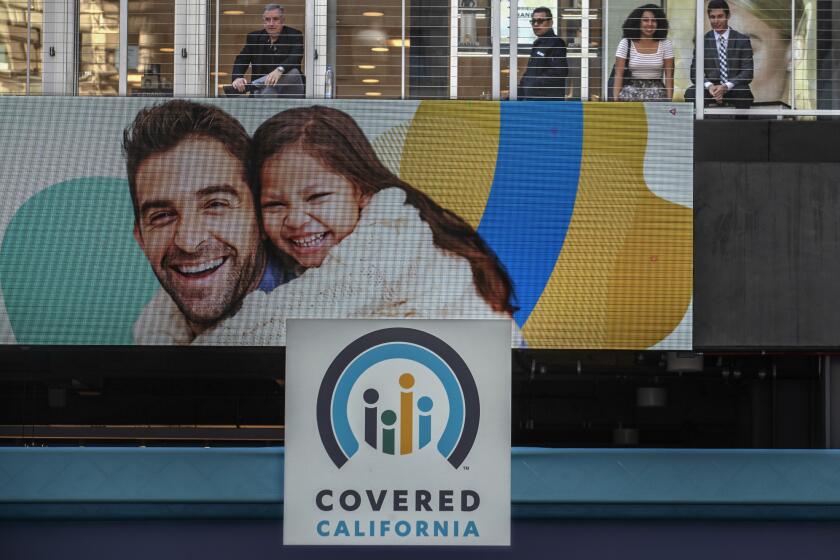The darkness is upon us. How to maintain your mental health when daylight-saving time ends

- Share via
It’s the least wonderful time of the year. At least when it comes to sunlight.
Yes, the holiday season is upon us once again. But so is the darkness, thanks to a horrible tradition colloquially referred to as “turning back the clocks.”
Californians made their preferences about changing clocks known in 2018, and yet here we are (that proposition, if enacted, would have locked our state in standard time like neighbor Arizona). And both of California’s U.S. senators are cosponsors of the federal Sunshine Protection Act, which would make daylight-saving time permanent across the country. It passed the U.S. Senate in March — and has been stalled in the House since.
And so, daylight-saving time ends on Sunday, Nov. 6, 2022, at 2 a.m., and with it, so does the ability to experience sunlight outside of working hours. You know the drill by now: Turn your clocks back an hour before you go to bed Saturday. Don’t forget your car; your phone will most likely update on its own.
In 2021, The Times spoke to experts about mental health tips to survive the season of less sunlight and seasonal affective disorder with your mental health intact. Here’s what they had to say.
With the sun vanishing before 5 p.m. these days — it’s winter, after all — there’s no stopping this, so you might as well enjoy the light while you can.
‘Winter blues’ or seasonal affective disorder?
As many as one in five Americans report “winter blues” beginning around this time of year: A late-fall funk that finds you more grouchy and lethargic. For about one in 20 Americans, symptoms rise to the level of seasonal affective disorder, or SAD.
SAD is caused by prolonged exposure to darkness and cold temperatures, said Lawrence A. Palinkas, a professor of social policy and health at USC who has studied seasonal affective disorder. Those changes disrupt our neuroendocrine systems, particularly the hormones that regulate moods. Traditionally, post-Agricultural Revolution human societies harvested crops in late summer, preserved foods in fall, and then pseudo-hibernated, staying cozy and warm indoors with family in the winter. (That annual cycle of birth, growth, harvesting and death is part of why so many societies have holidays relating to death this time of year.) Sadly, for most modern career paths, less sunlight doesn’t typically equate to fewer working hours, though you’re welcome to make a case to your boss on that front.
Winter blues typically involve low-level temporary symptoms that don’t impact your day-to-day life. You might occasionally feel downbeat or tired, but those symptoms resolve quickly. If symptoms do interfere with your ability to be productive and enjoy life, they rise to the level of SAD, which is a type of recurring depression. Symptoms of SAD include depression, listlessness, loss of interest in activities you used to enjoy, increased appetite (particularly craving carbohydrates), feeling hopeless or worthless or guilty, difficulty concentrating, weight gain, fatigue, excessive sleep and decreased sociality.
If SAD symptoms rise to a level where you feel you can’t control them with home remedies, or they’re disrupting your life to the point where you can’t function, it’s time to see a primary care doctor or mental health professional. You may need therapy, medication or other alternatives to help control your symptoms.
It’s part physics, part weather, but that doesn’t detract from the wonder of it all.
Strategies for seasonal affective disorder
Even if you know why it’s happening, experiencing SAD is no walk in the (increasingly dark at this hour) park. Here are some ideas and strategies for managing symptoms and keeping your mental health on track.
Try light therapy. SAD lamps are safe and effective as a treatment, though you should check with your doctor first if you have bipolar disorder or an eye condition. You’ll get optimal results by using them for about 30 minutes within the first hour of waking up. If you don’t want to buy one, take advantage of Southern California’s natural sunlight by making plans to get outside for a walk during the daytime. (Yes, you should still wear sunscreen.)
Brighten up your space. Go through your home and workspace and see if there are ways you could let in more of the season’s limited natural light. Can you move your desk or kitchen table to a sunnier spot? Move sunlight-blocking furniture out of the windows? Swap heavy curtains for sheer ones?
“We are no different than flowers and plants,” said Erin Raftery Ryan, the executive director of the National Alliance on Mental Illness Westside Los Angeles. “If we don’t get enough vitamin D, oftentimes we too will wilt.”
A new Biden administration rule will make more families eligible for subsidized health insurance through the Affordable Care Act. Covered California estimates that more than 600,000 Californians could benefit.
Create a routine. Part of why our internal clocks are so disrupted when the clock on the wall changes is because it can force us out of our routines. You might have gotten accustomed to after-work walks or a late afternoon coffee on your balcony. Now, it’s pitch black outside when you get up from your desk at the end of the day. Make a new enjoyable routine for your evenings to help your brain settle into the new season. Routines give you something to look forward to and tell your brain what to expect, and they reassure your subconscious that everything’s on track. Think of how Mr. Rogers always gently transitioned from the outside world to home: A warm sweater and slippers, putting things away, a song. Maybe add some gentle stretches near the window to your morning routine, or create a playlist that you turn on when your workday ends. Commit to a regular phone call with a good friend.
Get moving. Exercise can be a boon to mental health. Don’t worry about maxing out your heart rate or committing to intense sweat sessions. Gentle movement can be as beneficial to your brain as a more intense activity.
“Whether it’s yoga, whether it’s walking, whether it’s stretching — movement in general will help to get in the body and start to open up the parts of us that may start to feel stagnant,” said Allison Simon, a yoga and meditation instructor based in South L.A. It’s less about carving winter abs and more about “keeping that energy moving through the body, keeping our blood flowing.”
Practice meditation and gratitude. Along with the season of death and figuring out how to change your car’s clock, it’s a time of gratitude. There’s a reason you see “try meditation” recommended so often: It is clinically demonstrated to work. There are millions of apps and YouTube videos to get you started. A gratitude practice can be particularly powerful, Simon said: “Instead of looking outwardly of ‘what I need’ or ‘what is out there in the world,’ [it’s] ‘how can I find gratitude for where I am and what I currently have and what’s currently in my world.’”
Spend time with friends and family. People are more willing to get together in person now than they might have been in the last two years. You can gather and still be COVID-conscious, especially in Southern California, where outdoor dining is a year-round option. If you’re far from family and friends, a Zoom party is still an option, and it offers similar mental health benefits.
“Human connection is critical,” said Raftery Ryan. Her organization offers a free virtual peer support group.
About The Times Utility Journalism Team
This article is from The Times’ Utility Journalism Team. Our mission is to be essential to the lives of Southern Californians by publishing information that solves problems, answers questions and helps with decision making. We serve audiences in and around Los Angeles — including current Times subscribers and diverse communities that haven’t historically had their needs met by our coverage.
How can we be useful to you and your community? Email utility (at) latimes.com or one of our journalists: Jon Healey, Ada Tseng, Jessica Roy and Karen Garcia.
More to Read
Sign up for Essential California
The most important California stories and recommendations in your inbox every morning.
You may occasionally receive promotional content from the Los Angeles Times.

















